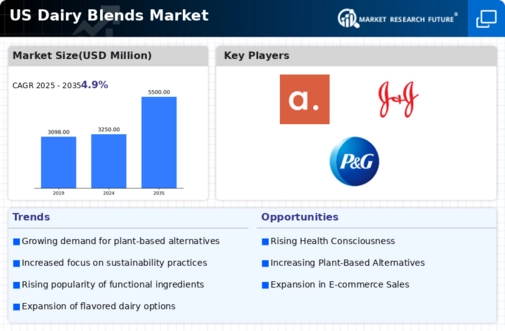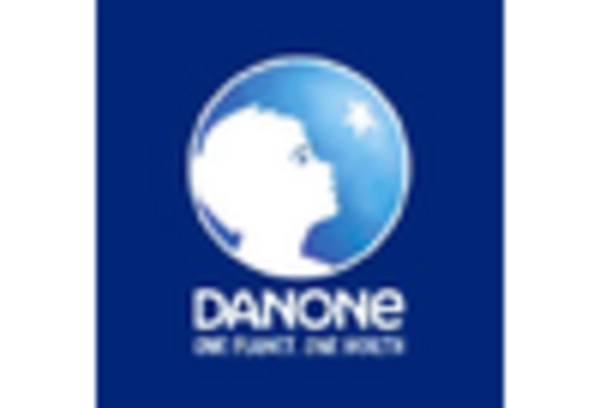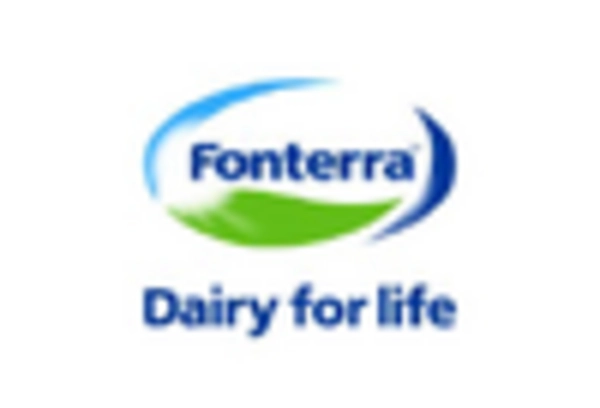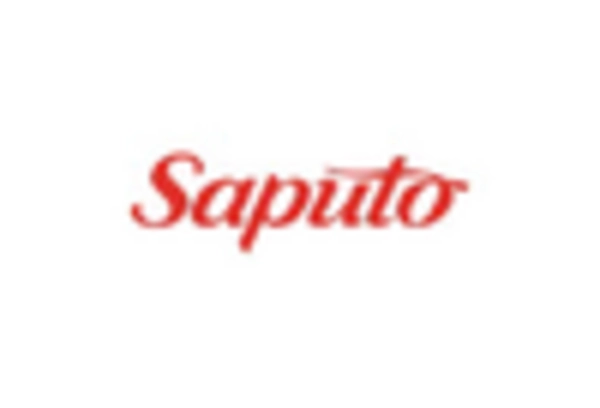Convenience and On-the-Go Consumption
The fast-paced lifestyle of consumers in the United States is significantly impacting the dairy blends market, as there is a growing preference for convenient and on-the-go food options. Busy schedules and the need for quick meal solutions are driving the demand for ready-to-drink dairy blends and portable packaging. This trend is reflected in the increasing sales of single-serve dairy products, which have seen a rise of approximately 7% in the past year. Manufacturers are responding by developing innovative packaging solutions that cater to the needs of consumers seeking convenience without compromising on quality. As the trend towards convenience continues, the dairy blends market is expected to expand, offering a variety of products that align with the lifestyle of modern consumers.
Rising Demand for Nutritional Products
The dairy blends market is experiencing a notable increase in demand for nutritional products, driven by a growing awareness of health and wellness among consumers. This trend is particularly evident in the United States, where consumers are increasingly seeking dairy blends that offer enhanced nutritional profiles, such as added vitamins, minerals, and probiotics. According to recent data, the market for fortified dairy products is projected to grow at a CAGR of approximately 5.5% over the next five years. This shift towards health-oriented products is influencing manufacturers to innovate and reformulate their offerings, thereby expanding the dairy blends market. As consumers prioritize functional foods that contribute to their overall well-being, the dairy blends market is likely to benefit from this evolving consumer preference.
Increased Focus on Clean Label Products
The clean label movement is gaining traction in the United States, influencing consumer purchasing decisions in the dairy blends market. Consumers are increasingly scrutinizing ingredient lists and seeking products that are free from artificial additives, preservatives, and genetically modified organisms (GMOs). This shift is prompting manufacturers to reformulate their dairy blends to meet the demand for transparency and simplicity in ingredients. Recent surveys indicate that approximately 60% of consumers are willing to pay a premium for clean label products, which suggests a lucrative opportunity for brands that prioritize natural ingredients. As the clean label trend continues to shape consumer preferences, the dairy blends market is likely to see a rise in products that emphasize purity and authenticity.
Technological Advancements in Production
Technological advancements in production processes are playing a crucial role in shaping the dairy blends market. Innovations such as improved pasteurization techniques, advanced fermentation methods, and enhanced packaging technologies are enabling manufacturers to produce high-quality dairy blends more efficiently. These advancements not only improve product shelf life but also enhance flavor and nutritional value. In the United States, the adoption of technology in dairy production has led to a reduction in waste and increased sustainability, which is becoming increasingly important to consumers. As technology continues to evolve, the dairy blends market is expected to benefit from enhanced production capabilities, allowing for greater product variety and improved quality, ultimately meeting the diverse preferences of consumers.
Growing Popularity of Plant-Based Alternatives
The dairy blends market is witnessing a surge in the popularity of plant-based alternatives, driven by changing dietary preferences and an increasing number of consumers adopting vegan or flexitarian lifestyles. In the United States, the plant-based dairy segment has experienced remarkable growth, with sales rising by over 20% in the last year alone. This trend is prompting traditional dairy manufacturers to explore innovative ways to incorporate plant-based ingredients into their dairy blends, thereby appealing to a broader audience. The integration of plant-based components caters to health-conscious consumers. It also aligns with sustainability goals, as many consumers seek products with a lower environmental impact. As the demand for plant-based options continues to rise, the dairy blends market is likely to evolve, offering a diverse range of products that meet these emerging consumer needs.
















